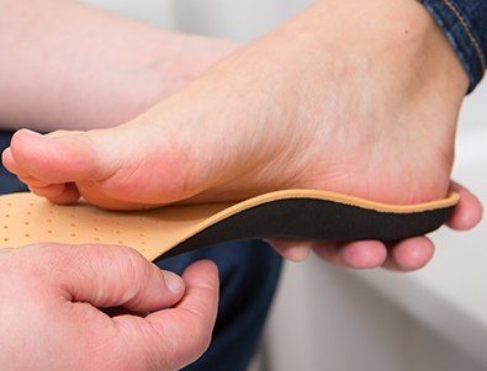Treating Tarsal Tunnel Syndrome Glastonbury
Walk with Ease Again

The Tarsal Tunnel is a region on the inner part of the ankle, just below the ankle bone (the “medial malleolus”). It’s formed by a thick ligament on top and the bones of the ankle below. The tunnel contains several tendons, blood vessels, and the Posterior Tibial Nerve.
Similar to Carpal Tunnel Syndrome in the hands/wrists, Tarsal Tunnel Syndrome (TTS) involves compression of the nerve that runs through the tunnel, which in this case is the Posterior Tibial Nerve. The nerve can get squeezed by the tendons that also run through a tunnel alongside it. When the nerve gets pinched or squeezed, it becomes irritated, and that causes various symptoms. Learn more about treating tarsal tunnel syndrome in Glastonbury on this page or contact the New England Stem Cell Institute today.
What Causes Tarsal Tunnel Syndrome?

Anything that squeezes or puts pressure on the posterior tibial nerve can cause TTS, such as:
- Flat feet or “fallen” arches. If you stand for long periods of time without good arch support, it can put stress on the Tarsal Tunnel.
- Tendinitis of any of the tendons passing through the tunnel. Tendinitis can cause swelling, enlargement, and inflammation of the tendon(s), and that can put increased pressure on the nerve.
- Chronic ankle instability. A loose ankle can put increased stress on the Tarsal Tunnel and its contents.
- Pregnancy. The increased body weight, combined with ligament looseness due to hormonal changes and fluid retention during pregnancy, can cause the arches to collapse and the tunnel to swell.
- Medical conditions such as diabetes, thyroid disorders, and other diseases.
Sometimes the symptoms occur suddenly, for example, when beginning a new exercise program. More often they develop over time from repetitive use.
What are the Symptoms of Tarsal Tunnel Syndrome?

The most common symptoms of TTS include:
- A tingling, burning sensation along the arch and/or bottom of the foot.
- Numbness along the bottom of the foot.
- Outright pain along the bottom of the foot.
Symptoms are typically felt on the inside of the ankle and/or on the bottom of the foot. Sometimes, symptoms may be isolated to just one spot. They also may radiate to the heel, arch, and/or toes. In rare cases, you may even feel symptoms in the calf.
How is Tarsal Tunnel Syndrome Diagnosed?

The first step in diagnosis is to take a detailed history of your symptoms and review how they started, combined with a proper physical exam. X-rays may help to identify underlying problems with the joints, such as arthritis. Diagnostic musculoskeletal ultrasound can identify a swollen and enlarged nerve. An MRI is rarely needed but can be helpful to identify other potential problems. Sometimes, nerve testing, such as an EMG/NCV test (“electromyography” and “nerve conduction velocity”) can be done, but this is rarely necessary for the initial phases of diagnosis.
How is Tarsal Tunnel Syndrome Treated?

Non-surgical treatment is always the first step. Surgery very rarely is needed. Initial treatment options include:
- Physical therapy
- Splinting or bracing
- Arch supports or orthotics
- Wearing shoes with better cushion and arch support
- Cortisone injection
- Modifying the offending activities, when possible
If there is an underlying tendon problem that might contribute to the TTS, such as tendinitis or a partial tear, then that should also be addressed.
When these conventional measures fail, our physicians at the New England Stem Cell Institute may perform nerve hydrodissection treatment. This is a painless procedure where a mixture of sterile saline and a small amount of anesthetic is injected around the nerve within the Tarsal Tunnel under ultrasound guidance, in order to help reduce the pinching of the nerve, thereby relieving any symptoms.
